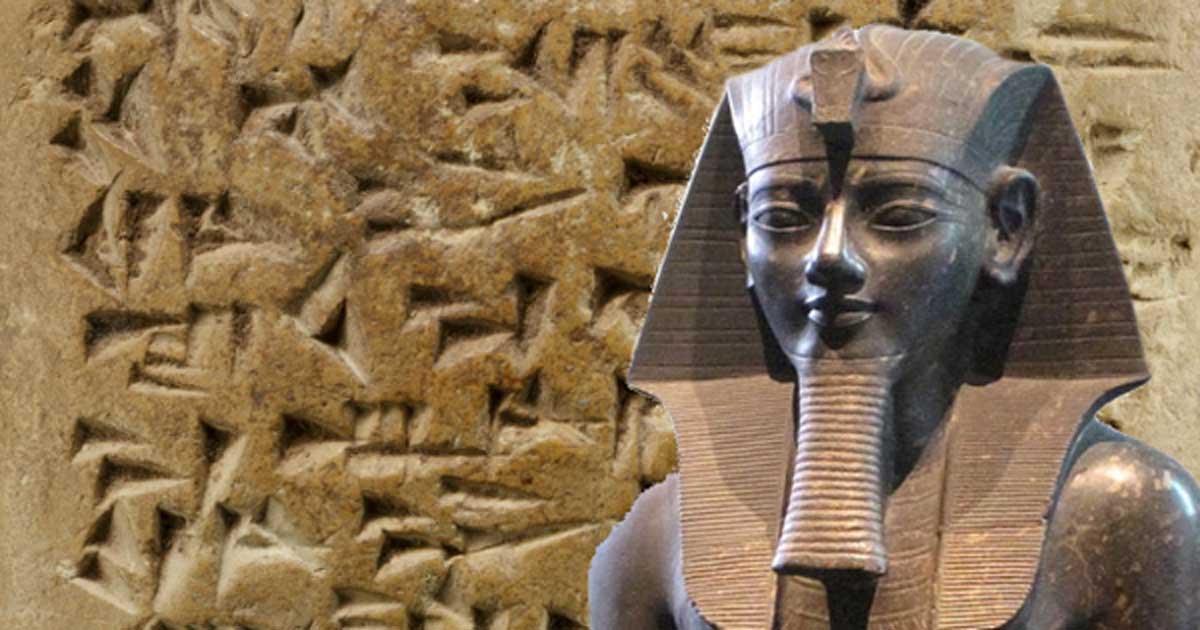
by
Damien F. Mackey
This article was
prompted by the request of a former professor of the
École du Louvre
in Paris:
Chronologically
speaking, EA was newly explained in the 1950’s-1960’s when the Russian Jew, Dr.
Immanuel Velikovsky, proposed, in his Ages
in Chaos series, that the era of EA properly belonged to, not the C14th BC
(as had generally been thought), but to about half a millennium later, to the
time of the Divided Monarchy in Israel and its known international connections.
Dr.
Velikovsky was able to arrive at various most compelling connections between EA,
revised, and the approximate era of king Ahab of Israel and king Jehoshaphat of
Judah (c. 850 BC, conventional dating), one of his most celebrated
identifications being between two successive kings of Amurru in EA, Abdi-ashirta
and Aziru, and two successive
biblical kings of Syria, respectively, Ben-hadad I and Hazael of Syria.
Several
decades later, revisionists would begin to bring some modifications to
Velikovsky’s scheme. Peter James, for instance, showed that Velikovsky’s
proposed identification of EA’s king of Urusalim,
Abdi-hiba, with king Jehoshaphat of Judah, became a far better fit when Abdi-hiba was identified instead as Jehoshaphat’s
son-successor, Jehoram (“The
Dating of the El-Amarna Letters”, SIS Review v.2 No.3 1977/78).
When
I, in the 1980’s-1990’s, embarked upon post-graduate research at the University
of Sydney with the intention of developing the growing revision, including EA,
it was pointed out to me by a respected mentor that, before I could
satisfactorily present a new model, I needed to probe to the very foundations
of the conventional system in order to expose whatever defects it may have.
Various
revisionists (e.g., Drs. Velikovsky and Donovan Courville) had already tackled
this issue, arguing that the Sothic (Sirius) astronomical system upon which
Egyptian dynastic chronology had been, for the most part, assembled, was quite
artificial, and that the resultant over-extended Egyptian chronology had
necessitated that centuries of ‘Dark Ages’ be slotted in to other histories (e.g.,
Hittite, Greek) to enable these to fit alongside the elongated Egyptian scheme.
Once
again I would recommend British revisionist Peter James here, who co-wrote (with
I. Thorpe, Nikos Kokkinos, Robert Morkot and John
Frankish) Centuries of Darkness: A Challenge to the Conventional Chronology
of Old World Archaeology (London: Jonathan Cape 1991).
The authors “concluded that the BC Dark Ages were the direct product of a
faulty Egyptian chronology. Its main purpose was to expose the archaeological
problems of the Dark Ages as largely fictitious, imposed on archaeologists by
the conventional chronology”:
Apparently I successfully achieved what I had set out to do in my MA
thesis, The Sothic Star Theory of the
Egyptian Calendar (1993), since a satisfied examiner commented on this
thesis - {which had been passed on both historical and scientific
(archaeoastronomical) grounds}: “It is important to show the weaknesses or
errors in our understanding of a theory in order to leave our minds free to
think of a more acceptable alternative’.
{A
much simplified summary of this postgraduate thesis may be read in an article at:
The
“more acceptable alternative”, including for EA, is what I had had in mind
right from the start, but the painstaking work of demolition was shown to have been a necessary preliminary before I
could embark upon the far more rewarding task of reconstruction. This latter would now become the intended goal of
my second postgraduate thesis, A Revised
History of the Era of King Hezekiah of Judah and its Background (2007).
This
turned out to be a very rocky ride indeed, with my biting off far more than I
could chew in my eagerness to incorporate a large slab of ancient history (the
“Background” aspect of this thesis). The doctoral thesis was, after many
vicissitudes, finally passed as an MA.
Now,
whilst I still accept a fair portion of my Revised
History to this day, and have greatly built upon it, I have also had to
modify - and in some cases, completely reject - my original findings.